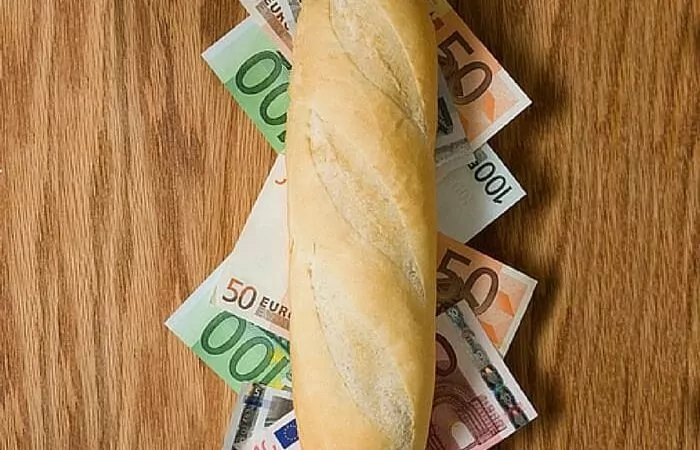
Multi-Currency Sandwich And Cash Flow Investments
Currency Sandwiches And Cash Flow
Negative interest rates are in the headlines. Japan has just recently caused a media uproar by joining the ranks of the ECB and central banks in Sweden, Switzerland, and Denmark, who are all charging commercial banks to store their extra cash.
One investment strategy touted by a colleague in the past to take advantage of low interest rates and overvalued currencies is what is referred to as a multi-currency sandwich.
It’s a straightforward idea. You borrow funds in a currency with a low interest rate… then you convert the borrowed capital into another currency where you have the potential to earn a much higher interest rate.
A common example from the days when my colleague was promoting this idea was to borrow yen at 3% and invest in Mexican peso bonds at 12%. You used part of the 12% interest payments from your peso bonds to make the 3% interest payments on your yen loan… and you kept the difference.
The risks are obvious. What if the borrowed currency strengthens against the invested currency? Best case was when the spread was wide, meaning you’d have time, in theory, to react before the relevant exchange rates were able to move too far against you.
When the currency goes the direction you expect (hope), you sell the investment and repay the loan, keeping the currency difference as additional profit.
One bank I knew offering these currency sandwiches even made it possible for you to leverage the amount borrowed, allowing for even bigger potential returns.
As the saying goes, it’s all fun until someone gets hurt. If one of your currencies goes wrong far and fast, you could end up with a loss… at least on paper. If interest rates change dramatically over a short period, you could find yourself upside down on the cash flow. This happened to many people using this strategy during the financial crisis.
To return to my opening point, if negative interest rates become available to the retail bank client, you could find yourself being paid to borrow money and collecting interest when you convert that capital to another currency and buy a bond… or just park it in a bank.
Buying Real State
Meanwhile, as I’ve been reminding you regularly, the U.S. dollar (and the Canadian dollar, in some cases) are at highs against many currencies worldwide, including the Colombian and Chilean pesos and the Brazilian real. I wouldn’t try to use a currency sandwich with these currencies, but now is a good time to invest your strong dollars in these markets.
You could buy real estate in one of these countries to generate a yield (through rental income) or you could invest in a money market account, CD, or bond denominated in one of these countries’ currencies.
While I don’t try to time currency markets when investing in real estate, I do work to set up cash flow investments in markets where I spend or intend to spend time.
Having rental properties in Europe, for example, where my rental income is in euros, allows me to accumulate euros to spend when I’m in France or Portugal… two places where I currently enjoy spending time and where I intend to return as often as possible for the indefinite future. Now when I show up, I’ve got local cash in the local currency to cover my living expenses throughout my stay.
Cash flow investments in Colombia generate pesos that I could use to cover expenses in that country. However, right now, I’m choosing to bring dollars into Colombia to cover carrying costs associated with my apartment there and my expenses when I’m in residence. The U.S. dollar is right now so strong against the Colombian peso that I prefer to accumulate my peso income for a rainy day when the dollar drops.
Creating diversified passive income, whether from rental property, turnkey farm investments, CDs, dividends, bonds, or other investment vehicles that throw off cash flow, is critical to securing your future and that of your family and crucial to peace of mind as you move toward the retirement stage of your life.
Right now, banks in Europe, Japan, and the United States aren’t helping much with low interest rates, but, with a strong dollar and no shortage of cash-flowing investments around the world, you do have great options.
Lief Simon
“Lief, first, thanks for all that you and your wife Kathleen do.
“The recent article about permanent residency in Panama leads to a question.
How does permanent residency relate to acquiring a second passport?
“Thanks.”
D.H.
You are eligible to apply for citizenship in Panama after five years of permanent residency. The Friendly Nations visa gives you permanent residency immediately upon approval. Other residency visa options in this country grant only temporary residency upon approval that then must be renewed several times before you receive permanent residency.
Also remember that Panama technically requires anyone who is naturalized as a citizen of this country to give up all previous citizenships. Most people don’t comply with this requirement. Right now, Panama doesn’t pursue the idea aggressively. However, should they ever decide to and discover that you continue to hold the citizenship of another country, your Panamanian citizenship could be revoked.



